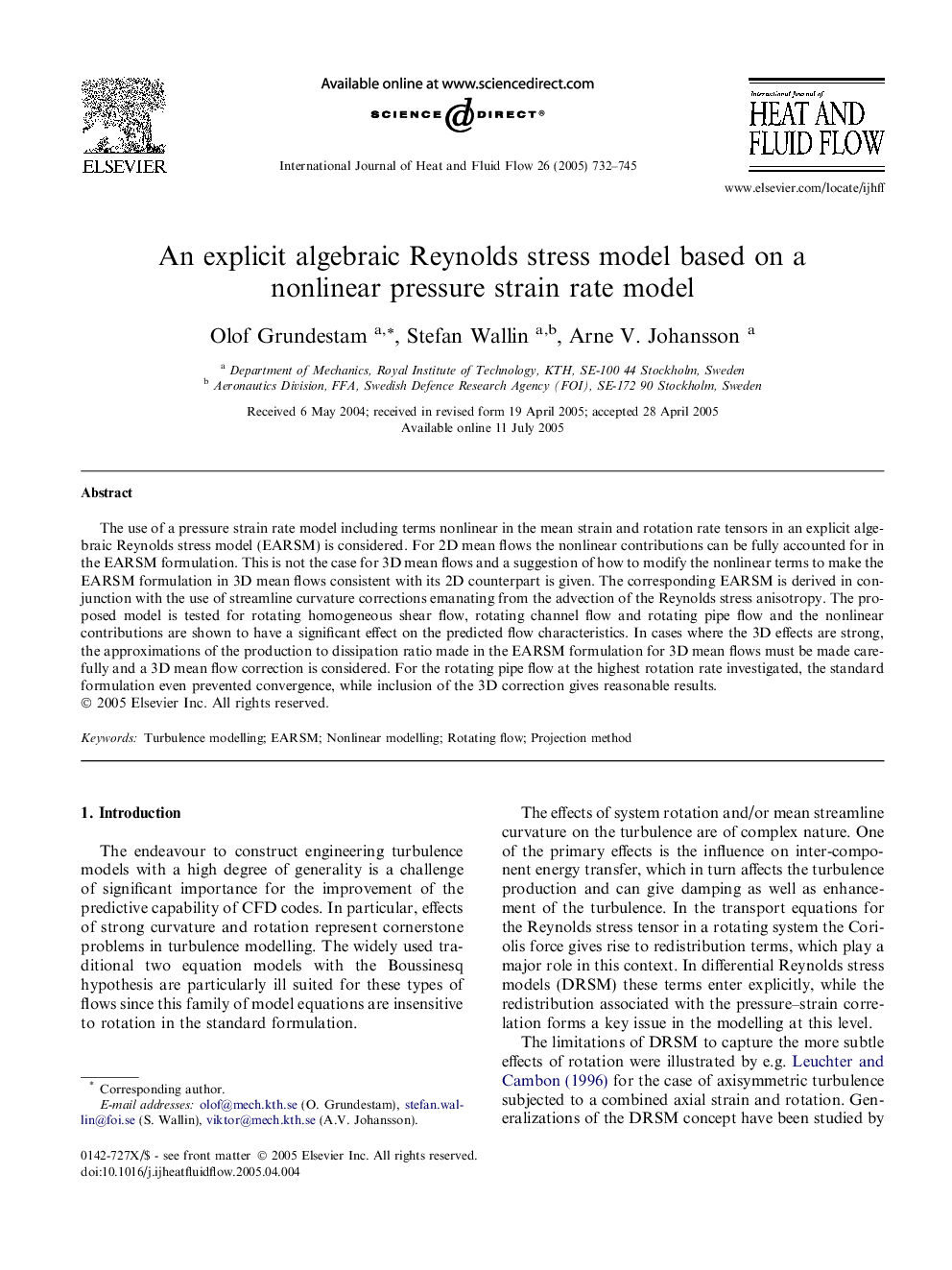| Article ID | Journal | Published Year | Pages | File Type |
|---|---|---|---|---|
| 9691105 | International Journal of Heat and Fluid Flow | 2005 | 14 Pages |
Abstract
The use of a pressure strain rate model including terms nonlinear in the mean strain and rotation rate tensors in an explicit algebraic Reynolds stress model (EARSM) is considered. For 2D mean flows the nonlinear contributions can be fully accounted for in the EARSM formulation. This is not the case for 3D mean flows and a suggestion of how to modify the nonlinear terms to make the EARSM formulation in 3D mean flows consistent with its 2D counterpart is given. The corresponding EARSM is derived in conjunction with the use of streamline curvature corrections emanating from the advection of the Reynolds stress anisotropy. The proposed model is tested for rotating homogeneous shear flow, rotating channel flow and rotating pipe flow and the nonlinear contributions are shown to have a significant effect on the predicted flow characteristics. In cases where the 3D effects are strong, the approximations of the production to dissipation ratio made in the EARSM formulation for 3D mean flows must be made carefully and a 3D mean flow correction is considered. For the rotating pipe flow at the highest rotation rate investigated, the standard formulation even prevented convergence, while inclusion of the 3D correction gives reasonable results.
Related Topics
Physical Sciences and Engineering
Chemical Engineering
Fluid Flow and Transfer Processes
Authors
Olof Grundestam, Stefan Wallin, Arne V. Johansson,
